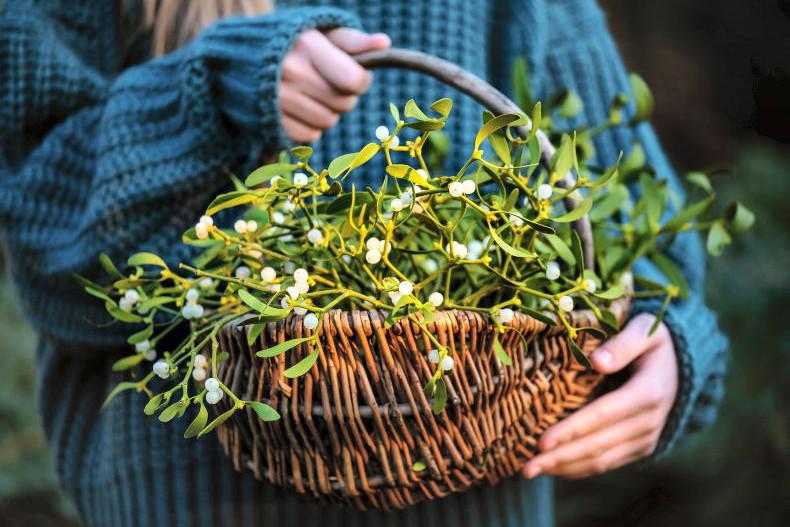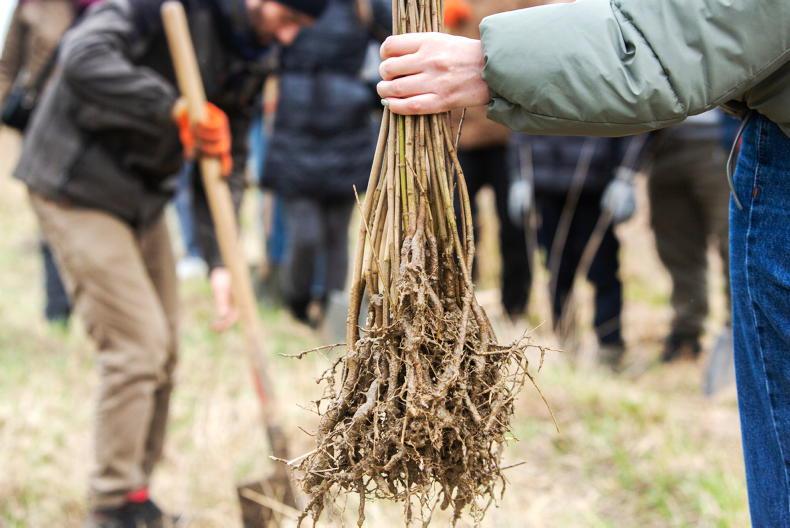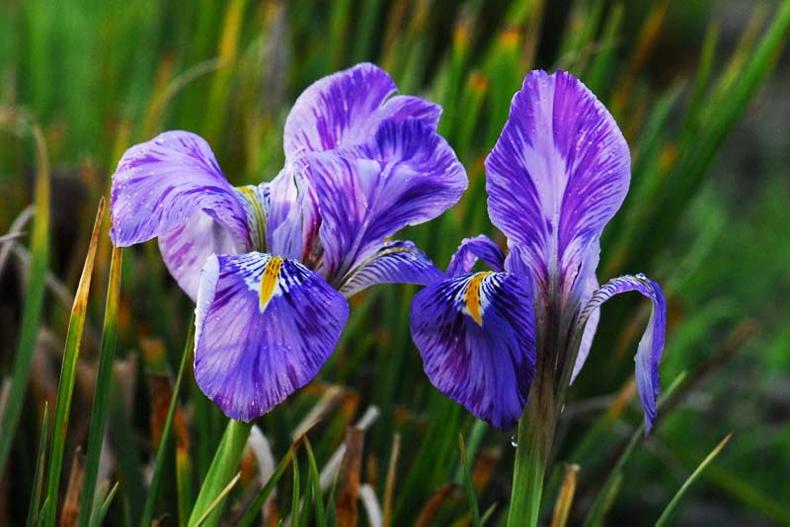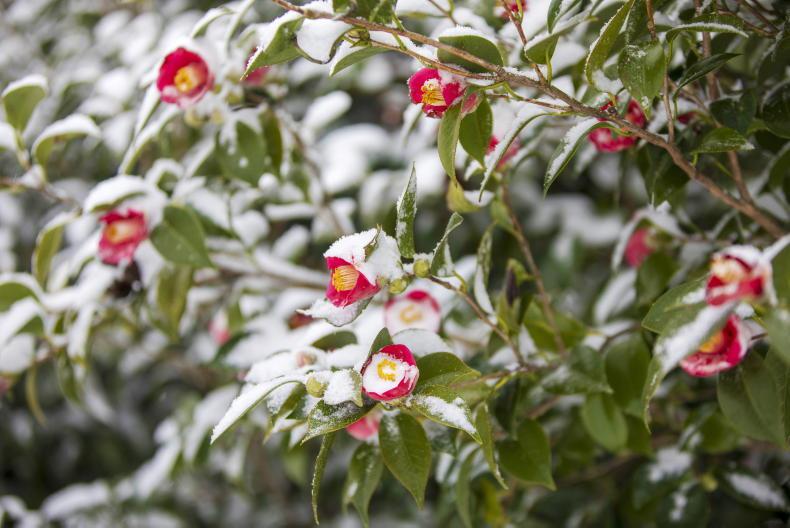Name: Autumn crocus, meadow saffron, naked lady.
Botanical name: Colchicum autumnale, Colchicum speciosum.
Colchicum was known to the ancient Greeks who gave it the name Kolkis. The word autumnale refers to the fact that it flowers usually between mid-August and mid-September, depending on rainfall; flowering earlier if the soil is moist. The word speciosum means special and beautiful.
Family name: Colchicum has its own family, namely the Colchicaceae, part of the greater lily family. Colchicum is highly poisonous, but nonetheless it is used in medicine and in plant breeding. The active ingredient is known as colchicine and is used for treatment of severe gout pain, but it must be used with great caution.
Colchicine also known to interfere with the development of new cells in the growing point of plants. A doubling of chromosomes can occur and this gives extra vigour and higher crop yields.
Garden value
In the space of a few days, the autumn crocuses suddenly pop up and open. Each bulb can produce one to six flowers, depending on the size. It is a wonder that something so delicate manages to arise at all. The flower is shaped like a goblet on a slender stem, and the stem is just a soft tube - part of the flower.
The pod where the seeds form after pollination is kept out of harm’s way down at soil level. The flowers are thrust up where they can attract passing insect pollinators and it would be difficult for a pollinator to miss these large light-purple flowers. The large, broad leaves do not appear until winter and spring, and wither away in summer.
The flowers are crocus-shape, though much bigger. They are about 15cm to 20cm tall, with six petals. Some kinds have relatively narrow petals. On a warm day, the whole flower opens wide to the sun; the petals opening out almost flat.
Growing autumn crocus
Some hybrids have a chequer-board pattern that can be seen close up, and some are fragrant. ‘The Giant’ is a large form. ‘Violet Queen’ has deep pink-purple flowers. ‘Autumn Queen’ is very popular with rosy purple flowers that have a white throat, and it is fragrant. ‘Waterlily’ is a double form, very pretty, but inclined to topple over after rain as the delicate stems cannot hold the increased weight.
One species is native here, namely Colchicum autumnale. It is very rare and exists only in a few river valleys in old, undisturbed pasture. Colchicum speciosum, is a real beauty and the most commonly grown, either as the species or its hybrids. Both species have beautiful white-flowered forms.
Colchicum bulbs can be bought and planted now. Choose good, fertile soil that’s well drained and in the sunlight. Lots of seeds are produced and if the soil and site conditions are right, grassy seedlings appear in their hundreds, some surviving to reach flowering size in three or four years.
There is a very good set of apples in most parts of the country. The set of pears appears not to be so good, but then pears flower earlier than apples and often suffer damage by frost. Still, the current set of pears is reasonably good. How about storing some apples and pears this year?
Storing apples & pears
Both kinds can be successfully stored until late into winter. There are differences in the way these two garden fruits can be stored. Even though they started to flower later than pears, some varieties of apple can be eaten towards the end of August and certainly September. These early varieties of apple do not store successfully, becoming mealy. However, some kinds can be stored, such as the cooking apple, ‘Bramley’s Seedling’, and the dessert varieties: ‘Lord Lambourne’,’Winston’and ‘Red Delicious’.

A handy way to store apples is to fill plastic freezer bags with about 2kg of fruit. The bag has the function of keeping the air moist around the fruit so it doesn’t shrivel and it supports the weight of fruit. Leave the bags open at the mouth and just loosely folded over to allow the gases of ripening to escape.
Unlike the early varieties of apple, pears are not eaten directly from the tree. Pears only ripen when fallen to the ground, but this can cause damaged fruit. Pick pears when they show signs of early ripening. There is usually the smallest change of colour, a lightening. Take them into a shed or store on trays with a loose sheet of polythene or kitchen aluminium. Pears may ripen within a few weeks of picking and are not as long-lasting in storage as the apples.
This week's garden reminders
Trees, shrubs & roses
Young trees that struggled in July have recovered well, but a check for water shortage should be made because young trees and shrubs need to develop bigger root systems. Roses that have finished flowering, especially ramblers and climbers, can be pruned now.
Flowers
Spring bulbs are in the shops and can be planted any time now. They always do best when planted early with some heat still in the soil. Perennial flowers that are messy or likely to self-sow, such as dierama and libertia, can be tidied; the seed-heads taken off.
Fruit, vegetables & herbs
There are lots of vegetables to pick and preserve, if not consumed. Sweetcorn has been excellent, a sure sign of a good growing year with plenty of sunshine. Weeds have made a strong recovery and must be hoed out.
Lawns
Lawns have been recovering well. Warm days have kept the soil temperatures up and occasional showers have ensured that lawns have greened up. Little needs be done except to keep the grass mown and edges trimmed. Autumn lawn fertiliser can be applied.
Greenhouse & House plants
Pick greenhouse tomatoes, peppers and cucumbers as soon as they are ready, otherwise cropping tails off quickly. Most greenhouse plants, except those that flower in winter, do not now need feeding as their growth reduces. Stop feeding house plants and reduce watering.
Read more
Gardening with Gerry: pretty petunia
Gardening: I'm walking on sunshine
Name: Autumn crocus, meadow saffron, naked lady.
Botanical name: Colchicum autumnale, Colchicum speciosum.
Colchicum was known to the ancient Greeks who gave it the name Kolkis. The word autumnale refers to the fact that it flowers usually between mid-August and mid-September, depending on rainfall; flowering earlier if the soil is moist. The word speciosum means special and beautiful.
Family name: Colchicum has its own family, namely the Colchicaceae, part of the greater lily family. Colchicum is highly poisonous, but nonetheless it is used in medicine and in plant breeding. The active ingredient is known as colchicine and is used for treatment of severe gout pain, but it must be used with great caution.
Colchicine also known to interfere with the development of new cells in the growing point of plants. A doubling of chromosomes can occur and this gives extra vigour and higher crop yields.
Garden value
In the space of a few days, the autumn crocuses suddenly pop up and open. Each bulb can produce one to six flowers, depending on the size. It is a wonder that something so delicate manages to arise at all. The flower is shaped like a goblet on a slender stem, and the stem is just a soft tube - part of the flower.
The pod where the seeds form after pollination is kept out of harm’s way down at soil level. The flowers are thrust up where they can attract passing insect pollinators and it would be difficult for a pollinator to miss these large light-purple flowers. The large, broad leaves do not appear until winter and spring, and wither away in summer.
The flowers are crocus-shape, though much bigger. They are about 15cm to 20cm tall, with six petals. Some kinds have relatively narrow petals. On a warm day, the whole flower opens wide to the sun; the petals opening out almost flat.
Growing autumn crocus
Some hybrids have a chequer-board pattern that can be seen close up, and some are fragrant. ‘The Giant’ is a large form. ‘Violet Queen’ has deep pink-purple flowers. ‘Autumn Queen’ is very popular with rosy purple flowers that have a white throat, and it is fragrant. ‘Waterlily’ is a double form, very pretty, but inclined to topple over after rain as the delicate stems cannot hold the increased weight.
One species is native here, namely Colchicum autumnale. It is very rare and exists only in a few river valleys in old, undisturbed pasture. Colchicum speciosum, is a real beauty and the most commonly grown, either as the species or its hybrids. Both species have beautiful white-flowered forms.
Colchicum bulbs can be bought and planted now. Choose good, fertile soil that’s well drained and in the sunlight. Lots of seeds are produced and if the soil and site conditions are right, grassy seedlings appear in their hundreds, some surviving to reach flowering size in three or four years.
There is a very good set of apples in most parts of the country. The set of pears appears not to be so good, but then pears flower earlier than apples and often suffer damage by frost. Still, the current set of pears is reasonably good. How about storing some apples and pears this year?
Storing apples & pears
Both kinds can be successfully stored until late into winter. There are differences in the way these two garden fruits can be stored. Even though they started to flower later than pears, some varieties of apple can be eaten towards the end of August and certainly September. These early varieties of apple do not store successfully, becoming mealy. However, some kinds can be stored, such as the cooking apple, ‘Bramley’s Seedling’, and the dessert varieties: ‘Lord Lambourne’,’Winston’and ‘Red Delicious’.

A handy way to store apples is to fill plastic freezer bags with about 2kg of fruit. The bag has the function of keeping the air moist around the fruit so it doesn’t shrivel and it supports the weight of fruit. Leave the bags open at the mouth and just loosely folded over to allow the gases of ripening to escape.
Unlike the early varieties of apple, pears are not eaten directly from the tree. Pears only ripen when fallen to the ground, but this can cause damaged fruit. Pick pears when they show signs of early ripening. There is usually the smallest change of colour, a lightening. Take them into a shed or store on trays with a loose sheet of polythene or kitchen aluminium. Pears may ripen within a few weeks of picking and are not as long-lasting in storage as the apples.
This week's garden reminders
Trees, shrubs & roses
Young trees that struggled in July have recovered well, but a check for water shortage should be made because young trees and shrubs need to develop bigger root systems. Roses that have finished flowering, especially ramblers and climbers, can be pruned now.
Flowers
Spring bulbs are in the shops and can be planted any time now. They always do best when planted early with some heat still in the soil. Perennial flowers that are messy or likely to self-sow, such as dierama and libertia, can be tidied; the seed-heads taken off.
Fruit, vegetables & herbs
There are lots of vegetables to pick and preserve, if not consumed. Sweetcorn has been excellent, a sure sign of a good growing year with plenty of sunshine. Weeds have made a strong recovery and must be hoed out.
Lawns
Lawns have been recovering well. Warm days have kept the soil temperatures up and occasional showers have ensured that lawns have greened up. Little needs be done except to keep the grass mown and edges trimmed. Autumn lawn fertiliser can be applied.
Greenhouse & House plants
Pick greenhouse tomatoes, peppers and cucumbers as soon as they are ready, otherwise cropping tails off quickly. Most greenhouse plants, except those that flower in winter, do not now need feeding as their growth reduces. Stop feeding house plants and reduce watering.
Read more
Gardening with Gerry: pretty petunia
Gardening: I'm walking on sunshine









SHARING OPTIONS